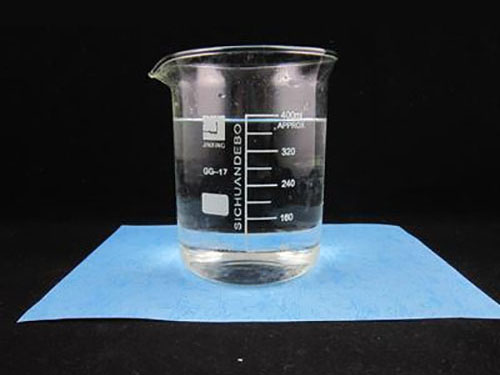Electroplating Chemicals: Essential Solutions for High-Quality Coating
2025-03-18
Electroplating is a widely used process in industries such as automotive, electronics, aerospace, and jewelry manufacturing. It involves depositing a thin layer of metal onto the surface of an object using an electrical current. This enhances the product’s appearance, corrosion resistance, and durability. However, achieving high-quality electroplating depends heavily on electroplating chemicals—specialized solutions that facilitate and optimize the plating process.
In this blog, we will explore the different types of electroplating chemicals, their roles in the plating process, and their importance in industrial applications.
What Are Electroplating Chemicals?
Electroplating chemicals are chemical solutions used to enable or improve the electroplating process. They include metal salts, electrolytes, additives, and cleaning agents, all of which contribute to the formation of a smooth, durable, and uniform metal coating. The right combination of these chemicals ensures excellent adhesion, corrosion resistance, and enhanced surface properties.
Key Types of Electroplating Chemicals and Their Functions
1. Metal Salts
Metal salts are the primary sources of metal ions in electroplating baths. These ions get deposited onto the substrate (object being plated) during the electroplating process. The type of metal salt used depends on the desired coating material.
Common metal salts include:
- Nickel Sulfate : Used in nickel electroplating for corrosion resistance and decorative coatings.
- Copper Sulfate : Used for copper plating in electronics and printed circuit boards (PCBs).
- Gold Chloride : Used for gold plating in jewelry and electronics for enhanced conductivity and aesthetics.
- Zinc Sulfate : Used in zinc electroplating for corrosion protection in automotive and construction industries.
Function: Provides the necessary metal ions for deposition on the substrate.
2. Electrolytes
Electrolytes are chemical solutions that allow the flow of electric current during electroplating. They help transport metal ions from the anode (metal source) to the cathode (object being plated).
Types of electrolytes:
- Acidic Electrolytes: Used in copper, nickel, and gold plating, offering high deposition rates.
- Alkaline Electrolytes: Commonly used in zinc and cadmium plating, providing better adhesion and reduced hydrogen embrittlement.
Function: Maintains electrical conductivity and supports the movement of metal ions in the plating bath.
3. Brighteners and Leveling Agents
Brighteners and leveling agents improve the final appearance of the electroplated surface by reducing roughness and enhancing luster.
Common brighteners include:
- Saccharin: Used in nickel plating for high gloss and smooth finishes.
- Thiourea: Used in silver plating to create a mirror-like surface.
Function: Enhances the brightness, smoothness, and uniformity of the plated layer.
4. Buffers and pH Adjusters
Maintaining the correct pH in the plating bath is crucial for controlling deposition rates and preventing defects. Buffers and pH adjusters help stabilize the chemical environment.
Common pH adjusters:
- Boric Acid : Maintains pH stability in nickel plating baths.
- Sodium Hydroxide : Used in alkaline baths for zinc and cadmium plating.
- Sulfuric Acid : Used to lower pH in acidic plating baths.
Function: Maintains an optimal pH balance for efficient plating.
5. Wetting Agents and Surfactants
These chemicals help reduce surface tension, preventing gas bubbles from forming on the plated surface, which can cause defects like pitting.
Common surfactants:
- Non-ionic surfactants: Reduce foam formation in plating baths.
- Anionic surfactants: Improve wetting and uniformity of metal deposition.
Function: Ensures even metal coating and prevents plating defects.
6. Anti-Tarnish and Passivation Agents
After electroplating, anti-tarnish agents and passivation chemicals are used to protect the coated surface from oxidation and discoloration.
Examples include:
- Chromate conversion coatings: Used after zinc plating for enhanced corrosion resistance.
- Benzotriazole: Used in copper plating to prevent tarnishing.
Function: Enhances the durability and longevity of the plated surface.
Why Are Electroplating Chemicals Important?
1. Improved Surface Quality
Electroplating chemicals ensure a smooth, defect-free, and aesthetically appealing surface, which is especially important for jewelry, automotive parts, and electronic components.
2. Enhanced Corrosion Resistance
Using high-quality electroplating chemicals helps prevent rust and oxidation, increasing the lifespan of plated products.
3. Increased Electrical Conductivity
Gold, silver, and copper electroplating chemicals improve the electrical conductivity of connectors and PCBs in the electronics industry.
4. Cost-Effective Production
Optimized electroplating baths reduce material waste and energy consumption, making the process more efficient and economical.
5. Environmental and Safety Compliance
Modern electroplating chemicals are formulated to meet environmental regulations, reducing the use of hazardous substances such as cyanides and hexavalent chromium.
Applications of Electroplating Chemicals
- Electronics Industry: Used for plating connectors, circuit boards, and semiconductors.
- Automotive Industry: Applied in chrome and zinc plating for corrosion protection and aesthetics.
- Jewelry Manufacturing: Used for gold, silver, and rhodium plating to enhance durability and shine.
- Aerospace Industry: Provides wear-resistant coatings for aircraft components.
- Medical Devices: Used in plating surgical instruments and implants to ensure biocompatibility.
Final Thoughts
Electroplating chemicals play a crucial role in achieving high-quality metal coatings. From metal salts and electrolytes to brighteners and anti-tarnish agents, each chemical contributes to the efficiency, durability, and appearance of the plated surface. By selecting the right combination of electroplating chemicals, industries can enhance product performance, protect against corrosion, and improve cost efficiency.
For businesses looking to optimize their electroplating process, investing in high-quality electroplating chemicals is essential for achieving superior results. Whether in electronics, automotive, or jewelry manufacturing, understanding these chemicals ensures a smoother and more effective plating operation.



